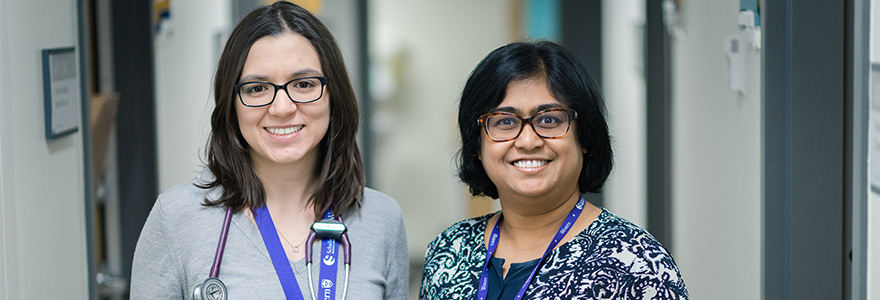Residency Objectives

Statement of Overall Goals of Residency Program
The family medicine residency-training program at Western University aims to graduate patient-centred and comprehensive family physicians, and develop future leaders for the discipline of family medicine through a flexible training program that is able to meet personal goals of our trainees and accreditation standards. Our trainees are evaluated through a multi-method strategy that includes regular reviews of clinical performance and direct observations.
Entrustable Professional Activities (EPA)
Ambulatory
- A1. Diagnose and manage common acute (urgent & non-urgent) presentations and diseases across the life cycle
- A2. Diagnose and manage common subacute and chronic presentations and diseases (including multimorbidity) across the life cycle
- A3. Provide wellness and preventive care across the life cycle
- A4. Diagnose and manage common mental health presentations and diseases across the life cycle
- A5. Perform common office procedures
- A6. Provide care for vulnerable and underserviced populations
- A7. Diagnose and manage pregnancy-related and post-partum conditions
- A8. Provide appropriate virtual care
- A9. Provide care for newborn infants
- A10. Diagnose and manage palliative and end of life conditions
Residential
- R1. Diagnose and manage palliative and end of life conditions
- R2. Provide appropriate care in the home/retirement home/LTC setting
- R3. Provide appropriate telephone triage and management within goals of care
Hospital – L&D
- L1. Diagnose and manage common presentations at triage
- L2. Assess and manage progress of labour (Stages 1, 2, and 3)
- L3. Perform common procedures related to labour and delivery
- L4. Provide hospital care and manage common postpartum presentations (to hospital discharge)
- L5. Assess newborn infant and recognize need to escalate care as needed
Hospital – ER
- E1. Diagnose and manage emergent presentations across the life cycle in the ED
- E2. Diagnose and manage non-emergent presentations across the life cycle in the ED
- E3. Recognize illness severity and changes in patient status and take appropriate steps
- E4. Perform common ER procedures
- E5. Assess and arrange patient discharge and follow-up
- E6. Request consultations appropriately in the ED
Hospital – In-patients
- I1. Diagnose and manage common acute/urgent/emergent medical conditions across the life cycle
- I2. Determine appropriateness for and complete hospital admission across the life cycles
- I3. Establish goals of care
- I4. Diagnose and manage end-of-life/palliative medical conditions across the life cycle
- I5. Determine appropriateness for and complete hospital discharge
Leader Competencies
- L1. Apply the science of quality improvement to contribute to improving systems of patient care
- L2. Contribute to a culture that promotes patient safety
- L3. Apply evidence and management processes to achieve cost-appropriate care
- L4. Demonstrate leadership skills to enhance health care
- L5. Set priorities and manage time to integrate practice and personal life
Scholar Competencies
- S1. Develop, implement, monitor, and revise a personal learning plan to enhance professional practice
- S2. Plan and deliver a learning activity
- S3. Provide feedback to enhance learning and performance
- S4. Recognize practice uncertainty and knowledge gaps in clinical and other professional encounters and generate focused questions that address them
- S5. Critically evaluate the integrity, reliability, and applicability of health-related research and literature








